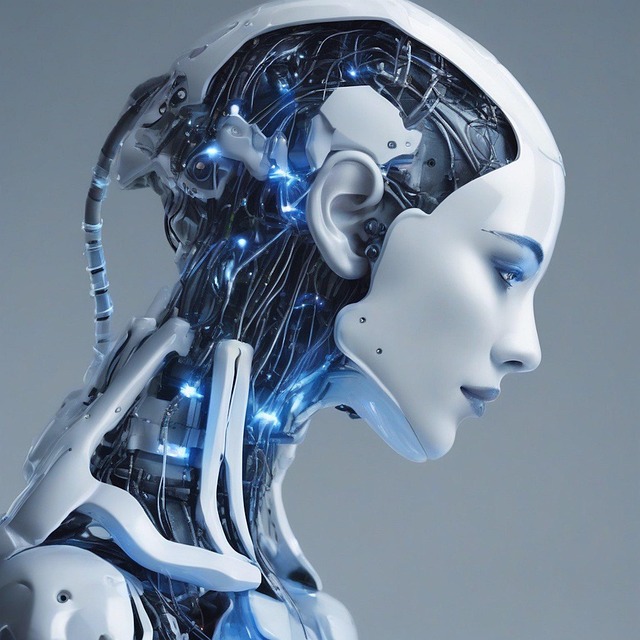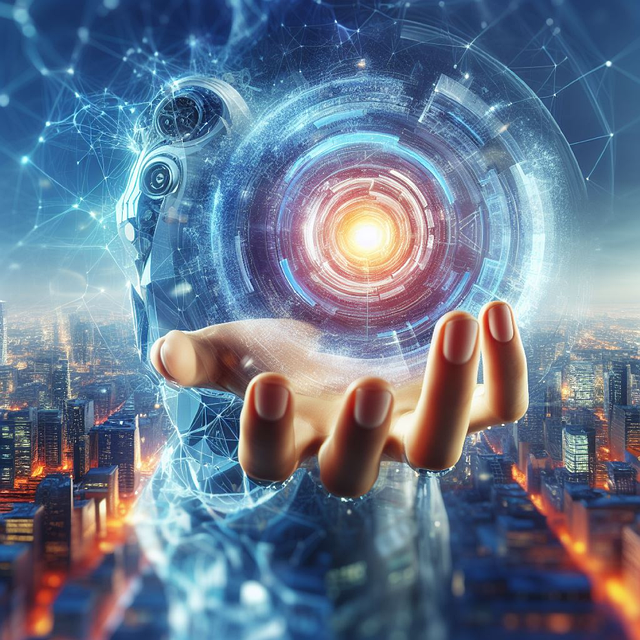AI chatbots revolutionize smart homes with personalized assistance, leveraging NLP and ML to learn user behaviors and preferences. They predict failures through IoT data analysis, enhancing maintenance scheduling. Security is enhanced by threat prediction and multi-layered features. AI optimizes energy efficiency through routine adjustments and device coordination. Voice interaction, powered by advanced chatbots, promises intuitive control and seamless communication within smart home ecosystems.
The future of our homes is smarter, more connected, and heavily reliant on artificial intelligence (AI). AI chatbots are emerging as personalized assistants, revolutionizing how we interact with our surroundings. From predictive maintenance and enhanced security to energy efficiency, these intelligent systems offer unprecedented control and customization. This article explores the transformative potential of AI in smart home systems, focusing on AI chatbots that cater to individual needs, predict device failures, and facilitate seamless voice interaction.
- Personalized Assistants: AI Chatbots for Individualized Home Control
- Predictive Maintenance: Forecasting Smart Device Failures
- Enhanced Security: AI-Powered Home Defense Systems
- Energy Efficiency: Optimizing Consumption with Machine Learning
- Voice Interaction: Seamless Communication within the Smart Home
Personalized Assistants: AI Chatbots for Individualized Home Control

AI chatbots are poised to revolutionize smart home systems by offering personalized assistants that cater to individual users’ unique needs and preferences. These intelligent virtual assistants can learn user behaviors, understand specific commands, and adapt to changing routines, making home control more intuitive and convenient. With natural language processing capabilities, residents can interact with their homes using simple voice or text commands, such as “Set the temperature to 72 degrees” or “Turn on the living room lights.”
By leveraging machine learning algorithms, AI chatbots can continuously improve their performance over time. They can remember user preferences, suggest customized settings based on weather conditions or time of day, and even predict users’ desires before they explicitly state them. This level of personalization enhances the overall smart home experience, making it more than just automated—it becomes a responsive and tailored environment that anticipates its inhabitants’ needs.
Predictive Maintenance: Forecasting Smart Device Failures

Predictive maintenance is a game-changer in the realm of smart home systems, where AI chatbots play a pivotal role in forecasting and preventing device failures. By leveraging machine learning algorithms and analyzing vast amounts of data from IoT devices, these intelligent assistants can identify patterns and anomalies that indicate potential breakdowns. This proactive approach allows homeowners to avoid unexpected disruptions and costly repairs by scheduling maintenance before issues arise.
For instance, an AI chatbot can monitor energy usage patterns in smart thermostats, identifying unusual spikes or dips that might suggest faulty hardware. Similarly, it can track the performance of smart lights, detecting dimming issues or flickering that could be early signs of malfunction. By providing real-time insights and alerts, these chatbots empower users to take timely action, ensuring their smart home devices operate efficiently and reliably.
Enhanced Security: AI-Powered Home Defense Systems

Smart home systems, powered by artificial intelligence (AI), are revolutionizing domestic security with advanced defense mechanisms. AI chatbots integrated into these systems can analyze patterns and behaviors to predict potential threats, enhancing proactive protection measures. By learning resident routines and identifying anomalies, these intelligent assistants can alert occupants or relevant authorities in real-time, ensuring swift responses to suspicious activities.
Moreover, AI-driven smart homes can employ facial recognition technology, voice commands, and motion sensors to verify identity and authorize access. This multi-layered security approach not only safeguards residents but also simplifies home management by enabling remote monitoring and control via an AI chatbot interface.
Energy Efficiency: Optimizing Consumption with Machine Learning

In the realm of smart home systems, AI chatbots are revolutionizing energy efficiency through machine learning algorithms. These intelligent agents can analyze patterns in household energy consumption data, identifying peak usage times and devices responsible for high power draw. By understanding these dynamics, AI chatbots can proactively suggest adjustments to daily routines and appliance settings, leading to significant power savings without compromising comfort or functionality.
For instance, an AI chatbot might recommend adjusting the thermostat slightly during specific hours when everyone is usually asleep or automating the dimming of lights in unoccupied rooms. Moreover, as smart home devices become more interconnected, these chatbots can orchestrate a symphony of energy-saving measures across multiple appliances, creating a bustling yet efficient household ecosystem.
Voice Interaction: Seamless Communication within the Smart Home

Voice interaction is set to become an integral part of our daily lives, especially within smart home ecosystems. AI chatbots, powered by advanced natural language processing, will facilitate seamless communication between users and their home devices. Imagine asking your AI assistant to adjust the lighting, play your favorite music, or even prepare a personalized morning briefing—all through simple voice commands.
As these chatbots evolve, they’ll gain the ability to understand context, learn user preferences, and anticipate needs, creating a more intuitive and personalized smart home experience. The future holds immense potential for these AI assistants to become the central hub of our homes, making daily tasks easier and more efficient while providing an engaging and interactive way to control our living environments.






